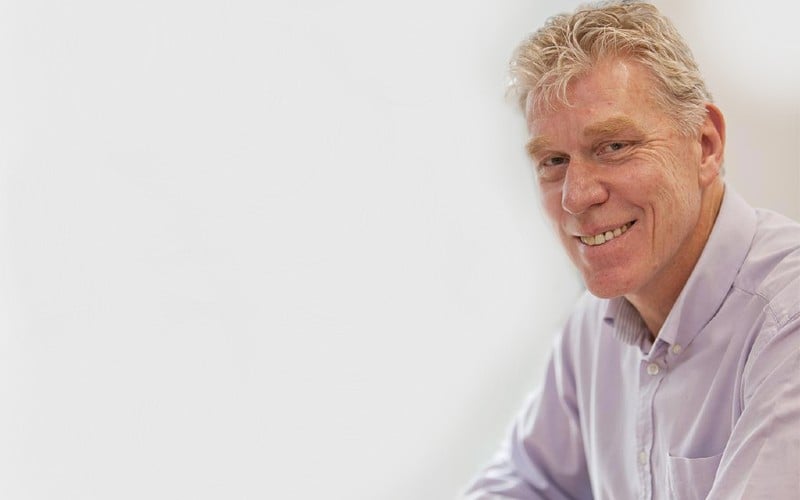Serial entrepreneur Keith Errey has worked at the bleeding edge of technology for more than three decades.
The Australian came to the UK in the 1980s to study for a Masters degree in atomic and molecular physics at Oxford University. Since that time he has been deeply involved in the local tech spinout scene – first as a founding team member of Oxford Lasers before he founded Oxford Synergetics then Toumaz.
In 2010, after a decade at the helm of Toumaz – which was by then listed on the London Stock Exchange AIM market and part of a larger group – the CEO decided to leave to spin out Isansys Lifecare with Rebecca Weir.
“Toumaz was essentially a semiconductor business based around very, very low power silicon chips,” he tells TechBlast. “That industry is really interesting, a lot of fun – but it only works if you have massive volume to drive cost out of things. And that wasn’t the case at that stage.
“I became much more interested in the verticals: the applications and the products and services that could be built on the technologies that we were developing.
“It was something that could have been done within that company, but it’s not always the case that boards agree on the direction so it was better to pull out and do it from a fresh start.”
Birth of Isansys
He and Weir decided that the best way forward was to build medical devices out of more readily available components and products then put regulatory wrappers around them so that they would become fully certified.
“If you’re going to build a technology platform with universal applications, it has to be affordable. We didn’t want just to build an expensive niche product,” he explains.
Vital signs observation is key to avoiding deterioration, cardiac arrest and death. However, with the exception of those staying in hospital intensive care wards, not all patients are adequately monitored due to a range of factors including a lack of suitable beds and nursing resource.
Patients in general wards are monitored at long intervals – up to every eight hours – during which time the patient’s status could change significantly.
Fashion business
Errey and Weir’s aim was to put wireless monitoring systems and data-driven decision-making into the hands of clinicians. The Abingdon-based company’s connected technologies allow for the remote monitoring of patients at home and elsewhere via devices which are far smaller than the traditional set-up.
“We decided right in the beginning of the company that we wouldn’t try to build consumer-facing solutions because we didn’t have the resources to be able to maintain that,” says Errey. “If you’re in a consumer-facing business, whether you like it or not, you’re actually in the fashion business.
“We see this with Apple Watches and other kinds of devices which are monitoring people’s vital signs. But you can’t just make a product and sit on it. You have a new product every couple of years, you have to continue upgrading, you have to have massive reach into the marketplace.”
Isansys’s tech platform, the Patient Status Engine (PSE), combines wearable sensors, wireless connectivity, predictive AI analytics, dashboards and alerting for hospital, home and community settings.
It has the clinically validated NHS predictive algorithm – NEWS, or National Early Warning Score 2 – built into it to allow for smart monitoring of a multitude of conditions via apps built both by Isansys and its clients.
Why do 10,000 people die unnecessarily every year in UK hospitals?
Partnerships
The founders’ approach was to focus on hospitals and the healthcare providers themselves.
“We decided that we would make products which were equivalent and better than existing medical devices. We designed them with a lot of input from nurses and doctors, particularly nurses – the people who use the products on the ground,” says Errey.
“We don’t just form a vendor/customer relationship – we always form some kind of partnership because, once you invest in our platform, then there’s a whole future-proofing element there where you can keep upgrading – not through buying extra stuff, but through software upgrades to the overall platform. So you can treat more patients with these new algorithms.”
He adds: “We are genuinely involved in a mission here. It sounds a bit high falutin’, but we’re really involved in taking this technology and trying to really help the patients, at the end of the day.”
Isansys Lifecare – Every patient monitored, connected and safe
Entering the NHS
Errey describes entry into the NHS market as “a huge challenge, but not insurmountable”.
“The NHS recognises that, the funding bodies recognise that, but it’s hard to overcome,” he adds.
“The NHS, in a way rightly, demands evidence. But if something is new, there is no evidence! You have to build the evidence; to build the evidence you need access to the patients; and the people who have access to the patients are the frontline doctors and nurses, who are absolutely maxed out.
“That is really the difficulty there: trying to build the evidence base fast enough.”
Asked for a tip for aspiring entrepreneurs, he answers: “If you want to make money quickly, don’t go into healthcare!
“No, seriously: a lot of entrepreneurs are driven by that desire so they have options for the future – which is entirely valid – but it’s unlikely to happen in a healthcare startup.
“Make your money first – and then do healthcare.”


